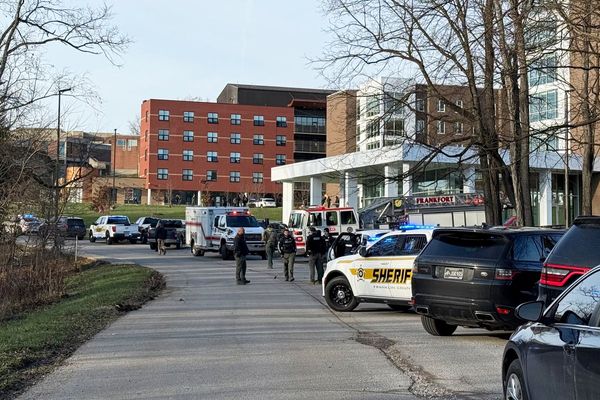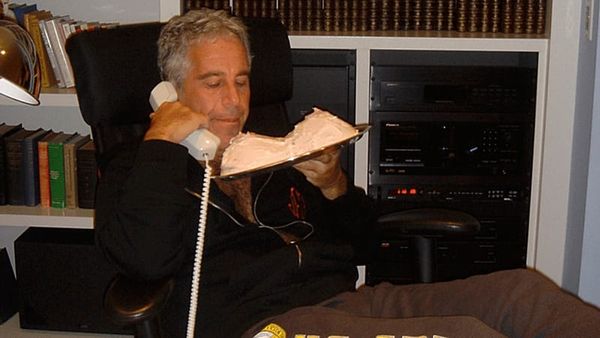
As I heft the weight of the backpack on to my shoulders, I ask myself: am I too old for this? In my 20s I would regularly take off for days of wild camping, but now, in my 40s, I have accumulated more than a few aches from all those youthful adventures. Still, on this pilgrim trip across the South Downs from Lewes to Cuckmere Haven, I can leave the tent behind, as I will be sleeping in places of sanctuary along the way.
The Sanctuary Network has been set up by the British Pilgrimage Trust along three routes, the Old Way in Sussex, the Golden Valley Pilgrim Way in Herefordshire, the Northern Saints Trails and the Cornish Celtic Way. The aim is to offer walkers, low-cost accommodation in the heart of communities in return for registering as friends of the BPT and a donation of between £5 and £20.
At Lewes I meet my friend Mark and we stock up on food at the farmers’ market before climbing the cobbled streets to the downs. We are following a section of the Old Way, a 240-mile pilgrimage route from Southampton to Canterbury, rediscovered on a 1360 map by British Pilgrimage Trust co-founder Will Parsons.

Pilgrimages are for everyone, not just those with faith. Mark’s pilgrimage is to worship a landscape that resonates within him. It is easy to see why. Cloud shadows whisper to each other as they drift across the rolling hills and make their way down to the sea. A peregrine falcon flies past at eye level watching us as it drifts into the valley known as Bible Bottom. The hills enfold us as we descend on one path then climb to Mount Caburn, a defensive seat for iron age lords before descending once again to Glynde. Down from the breezy hills, we are glad to stop at the tiny forgotten church of St Andrews, Beddingham: once a Saxon settlement, it is now marooned beside the junction of the A26 and A27.

Inside, silence descends. Mark speculates how often the pews of this church see visitor bottoms, but I am grateful that it exists and is open. We still need places like this, pockets of cool, whitewashed peace.
We leave the village along a shady track lined with ash trees and pass Furlongs, once the home of artist Peggy Angus, who gathered friends at the farmhouse and partied beside a dew pond in the hills. Sussex artist Eric Ravilious depicted the farm in the 1930s,with Peggy shown in the garden among her sunflowers.
At Firle we dine at the Ram Inn and drink Harvey’s Sussex Best bitter, made at the brewery in Lewes, before heading for the night’s accommodation at St Peter’s church. The church’s Anglican priest, Peter Owen-Jones, is known for his TV documentaries, including the Extreme Pilgrim and How to Live a Simple Life. Now he welcomes fellow pilgrims to his church. Inside the air smells of incense and the place feels welcoming, with flowers in a jar and kneelers embroidered with depictions of local wildlife. I lay my camping mat and sleeping bag beneath a window covered in scallop shells, the sign of the pilgrim. Dusk light falls along the plaster walls and plays across the carved alabaster features of Sir John Gage and his wife who lie side by side on top of their tomb in the chapel.

Next morning, I open my eyes to the sight of the sun shining through the stained-glass windows. Mark and I eat pains au chocolat on a bench in the churchyard and search for the simple graves of Bloomsbury artists Duncan Grant and Vanessa Bell, who also lie side by side, with a smaller memorial to their daughter, Angelica, at their toes. We head up to the South Downs once again. The cold morning air is like ice water and the path is busy with joggers and horse riders. Newhaven appears below, sheltering against a pearlescent sea as the chalk of the downs meets the water. I feel abundantly happy. Somehow less is more, a less comfy bed, less food, and I can recognise how wealthy I am to have this morning on top of the hills.
In the garden at Charleston, once home of the Bloomsbury group, we buy delicious focaccia bread and vegetable soup from the cafe and watch blackbirds on the hunt.
At Alciston we wander past the remains of a monastic farm while Mark falls in love with every flint cottage and ancient barn we pass. Two fellow pilgrims sit in silence in the tiny simple church and a pilgrim bell hangs on the wall. Visitors are invited to ring the bell, a ritual common to many faiths, the sound used to create internal space.

The act of pilgrimage is returning to these shores. A chance to walk with intention and to unclutter the mind. Tomorrow we will complete our three-day walk by following the winding River Cuckmere to the sea, but tonight we are to stay in the Old Chapel Centre, a United Reformed church in Alfriston. It is a bright, airy space that offers a simple kitchen and toilet facilities. We drink mint tea and lay out out mats on the floor of the church for our final night.
You need to be prepared to rough it a little to take advantage of the pilgrim sanctuaries. They offer no-frills accommodation – “indoor camping”, as the Old Chapel Centre rightly says. Don’t come expecting fresh linen and room service, don’t even come expecting a bed and a kettle, but do come. What they offer, for a small donation, is the opportunity to wake up in beautiful spaces with daylight pouring through stained glass and the chance to experience something rare and important – the trust of people who would open up their sacred spaces to strangers on a journey. In the times we are living in, I found that act of trust priceless and humbling.







